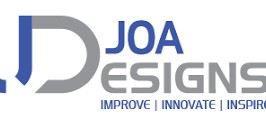In today’s competitive product development landscape, the ability to quickly iterate and efficiently collaborate is essential for success. Engineers, designers, and other stakeholders need to work seamlessly together to bring ideas to life faster, with fewer errors and greater precision. This is where SOLIDWORKS, a leading 3D computer-aided design (CAD) software, plays a pivotal role. But to unlock the full potential of solidworks training teams need to be properly trained. SOLIDWORKS training not only enhances technical expertise but also fosters improved communication and collaboration among cross-functional teams. In this article, we’ll explore how SOLIDWORKS training can accelerate product development by strengthening team collaboration.
Empowering Teams with a Unified Language
One of the most significant barriers to effective collaboration in product development is the use of different tools and terminology across teams. Designers, engineers, and manufacturers often work in silos, using various software platforms that may not integrate well. This fragmentation can lead to miscommunication, delays, and costly errors.
SOLIDWORKS provides a common platform where all stakeholders—from mechanical engineers to electrical engineers to designers—can work in a unified environment. Training ensures that everyone understands the tools, terminology, and processes involved in using SOLIDWORKS. When all team members are on the same page, they can easily share designs, feedback, and revisions in real-time. This leads to faster decision-making and fewer misunderstandings, accelerating the overall product development process.
Streamlining Collaboration Through Advanced Features
SOLIDWORKS is not just a tool for creating 3D models; it also boasts a suite of advanced features that facilitate team collaboration. For example, SOLIDWORKS PDM (Product Data Management) enables teams to store, manage, and share design files securely. When teams are properly trained in these features, they can better manage design iterations, track changes, and work with version control—ensuring that everyone is working with the most up-to-date information.
Moreover, SOLIDWORKS integrates seamlessly with other enterprise tools such as ERP (Enterprise Resource Planning) and PLM (Product Lifecycle Management) systems. Training teams to leverage these integrations further enhances collaboration by streamlining data exchange between departments like manufacturing, supply chain, and design.
Enhancing Communication Through Collaborative Tools
Effective communication is key to collaboration, and SOLIDWORKS training offers teams the ability to utilize collaborative tools that enhance the design review process. Tools such as SOLIDWORKS Visualize allow team members to create realistic renders and presentations of product designs, making it easier to communicate design concepts to non-technical stakeholders.
Additionally, SOLIDWORKS' real-time collaboration features—such as cloud-based access and shared models—make it possible for team members to work together from different locations. This is particularly useful in today’s global economy, where teams may be spread across various geographic regions. By training teams on how to use these features, organizations can promote greater collaboration regardless of location, which is increasingly important as remote work becomes more prevalent.
Encouraging Cross-Functional Collaboration
In product development, the ability to collaborate across different disciplines is vital for innovation. SOLIDWORKS training encourages cross-functional collaboration by teaching team members how to use the software in a way that aligns with the needs of other departments.
For example, mechanical engineers can collaborate with electrical engineers by understanding how components will be assembled together in the final product. Product designers can work more effectively with manufacturing teams by using SOLIDWORKS’ simulation tools to predict how designs will behave under real-world conditions. This cross-departmental understanding helps to eliminate potential design flaws early in the process, reducing the need for costly revisions later on.
Facilitating Faster Problem-Solving and Innovation
SOLIDWORKS training equips teams with the skills to quickly identify potential problems during the design phase. SOLIDWORKS’ powerful simulation tools allow engineers to test designs virtually, reducing the need for physical prototypes. This can save significant time and resources during the development process.
When teams are trained in using these simulation tools, they can collaboratively evaluate various design iterations, assess their performance, and make data-driven decisions. This collaborative problem-solving process fosters innovation, as different perspectives come together to create more robust and efficient solutions.
Building Confidence and Reducing Errors
A well-trained team is a confident team. When employees are proficient in using SOLIDWORKS, they are more likely to contribute their ideas, catch design flaws early, and proactively suggest improvements. By reducing the risk of errors and rework, teams can focus their time on creating innovative solutions rather than fixing mistakes.
Moreover, SOLIDWORKS training helps create a culture of continuous improvement. As teams become more familiar with the software and its capabilities, they are better equipped to push the boundaries of what is possible in product design. This leads to faster innovation cycles, with teams working together to refine and perfect products more efficiently.
Scaling Collaboration for Larger Projects
As projects grow in complexity, so does the need for efficient collaboration. Large-scale product development projects often require the input of multiple teams working on different aspects of the product simultaneously. SOLIDWORKS training ensures that all teams—whether working on mechanical, electrical, or software components—can collaborate seamlessly within the same platform.
The ability to share and modify designs in real-time helps avoid bottlenecks and ensures that no team is left behind. SOLIDWORKS’ cloud-based collaboration features allow for easy access to design files, even as the project scales to involve more contributors. Training ensures that teams are able to manage larger, more complex projects without sacrificing efficiency or quality.
Conclusion
In conclusion, SOLIDWORKS training plays a crucial role in enhancing team collaboration in product development. By providing a unified platform for all stakeholders, promoting efficient communication, and empowering cross-functional collaboration, Driveworks helps accelerate the development process. Well-trained teams are more confident, efficient, and capable of tackling complex design challenges, ultimately leading to faster innovation and reduced time-to-market.
Organizations that invest in SOLIDWORKS training are not only improving their technical capabilities but also fostering a culture of collaboration that drives success in today’s competitive market. Whether you are a small team or a large enterprise, SOLIDWORKS training can transform the way your teams work together, ultimately accelerating your product development efforts.








